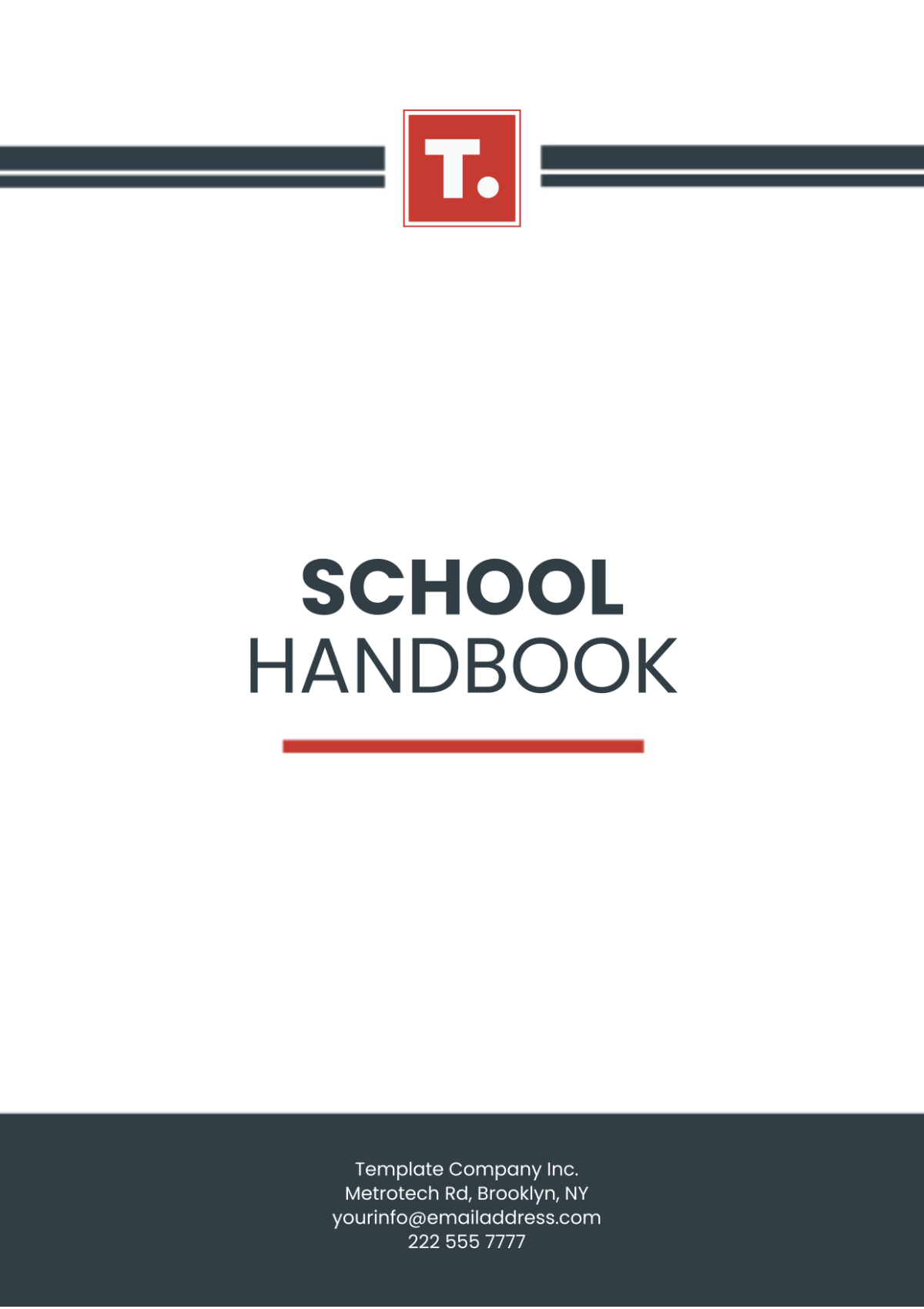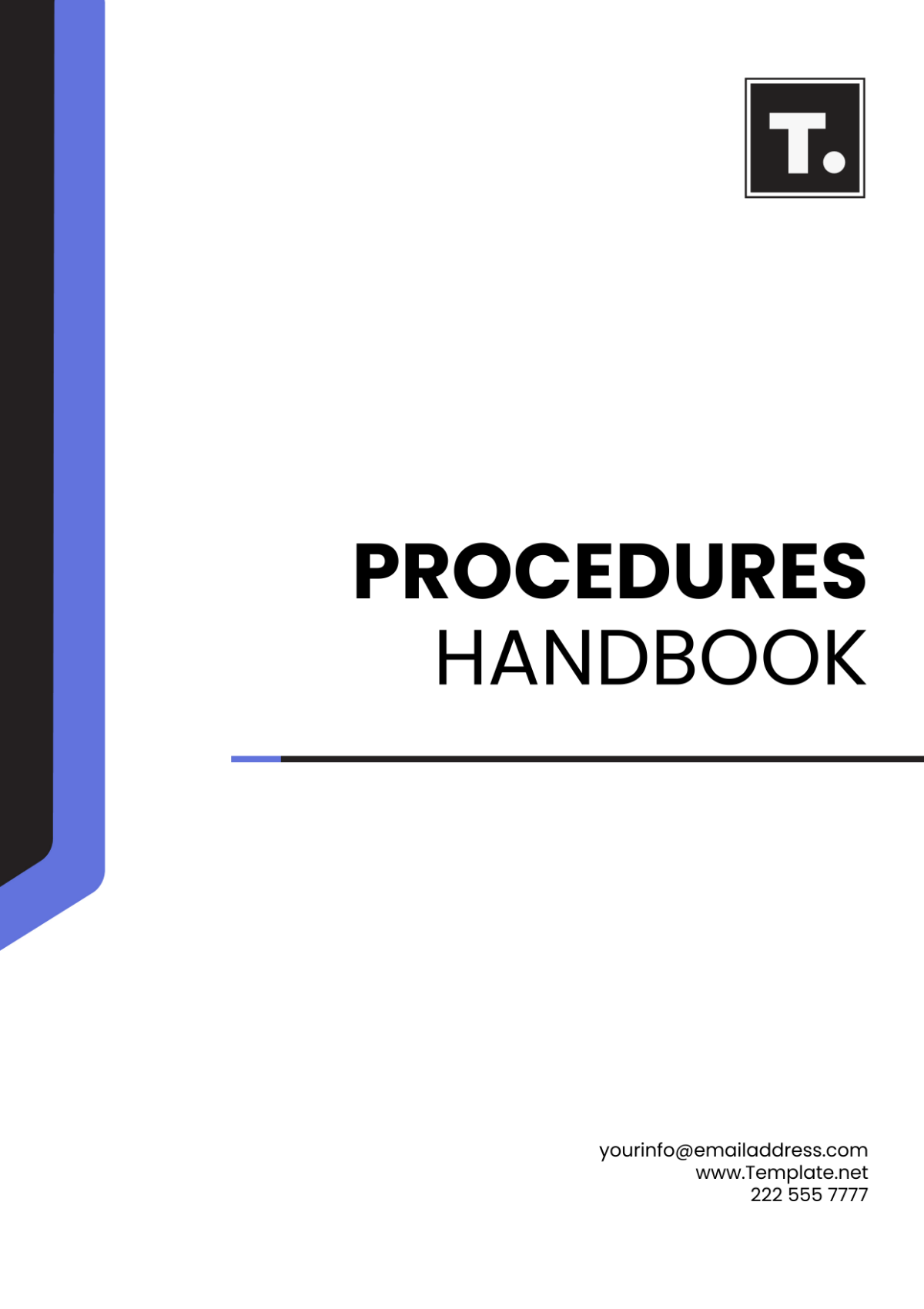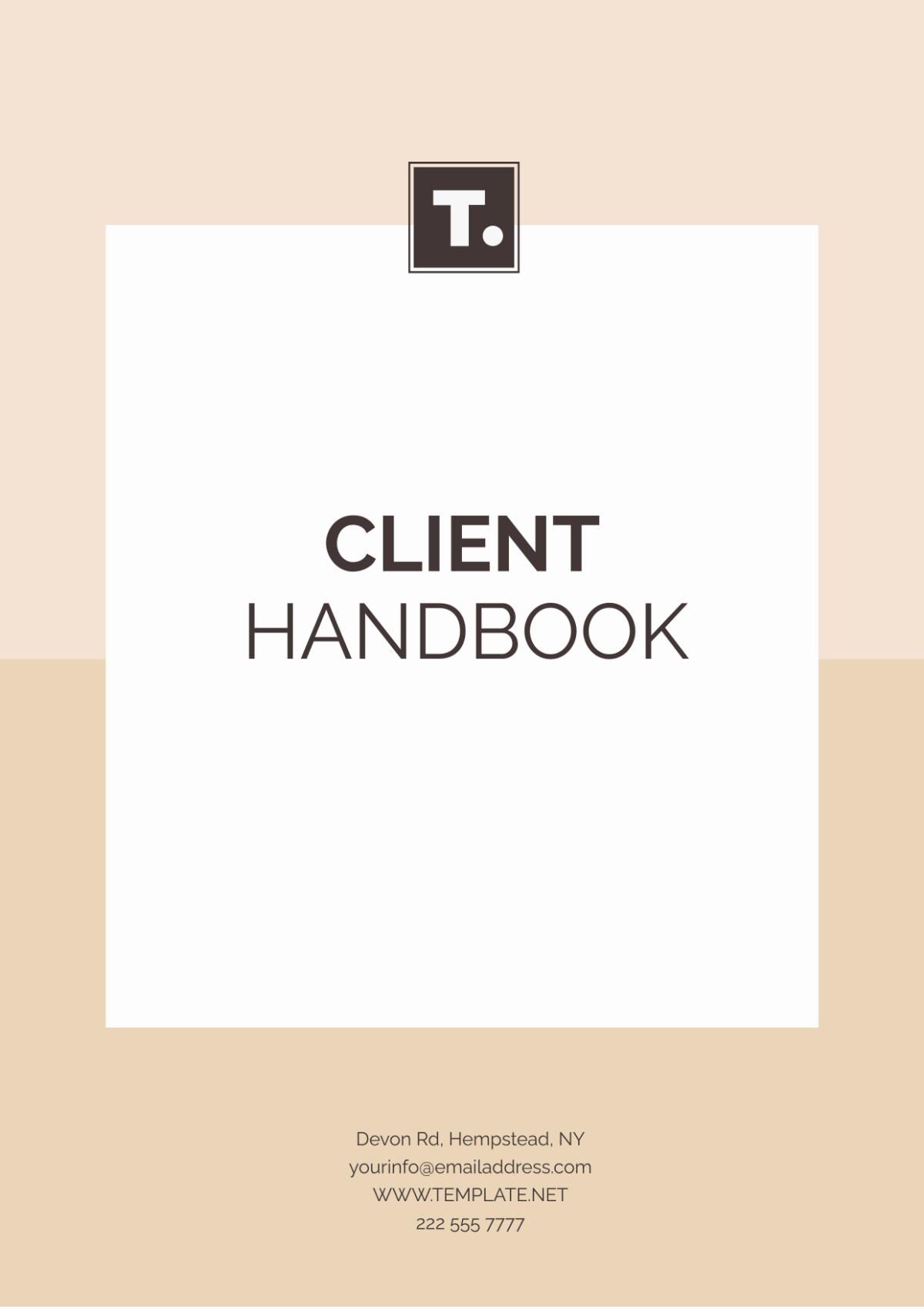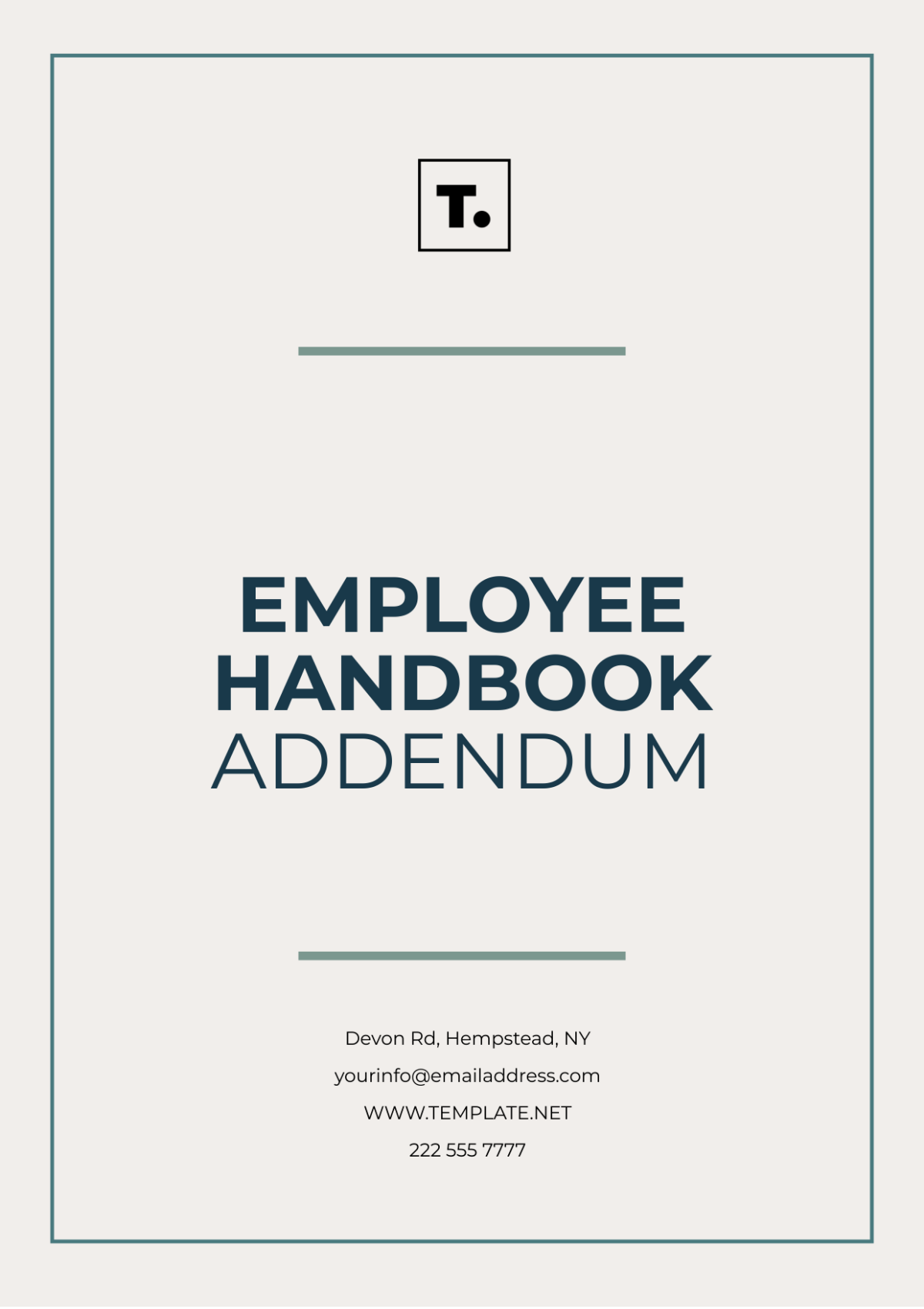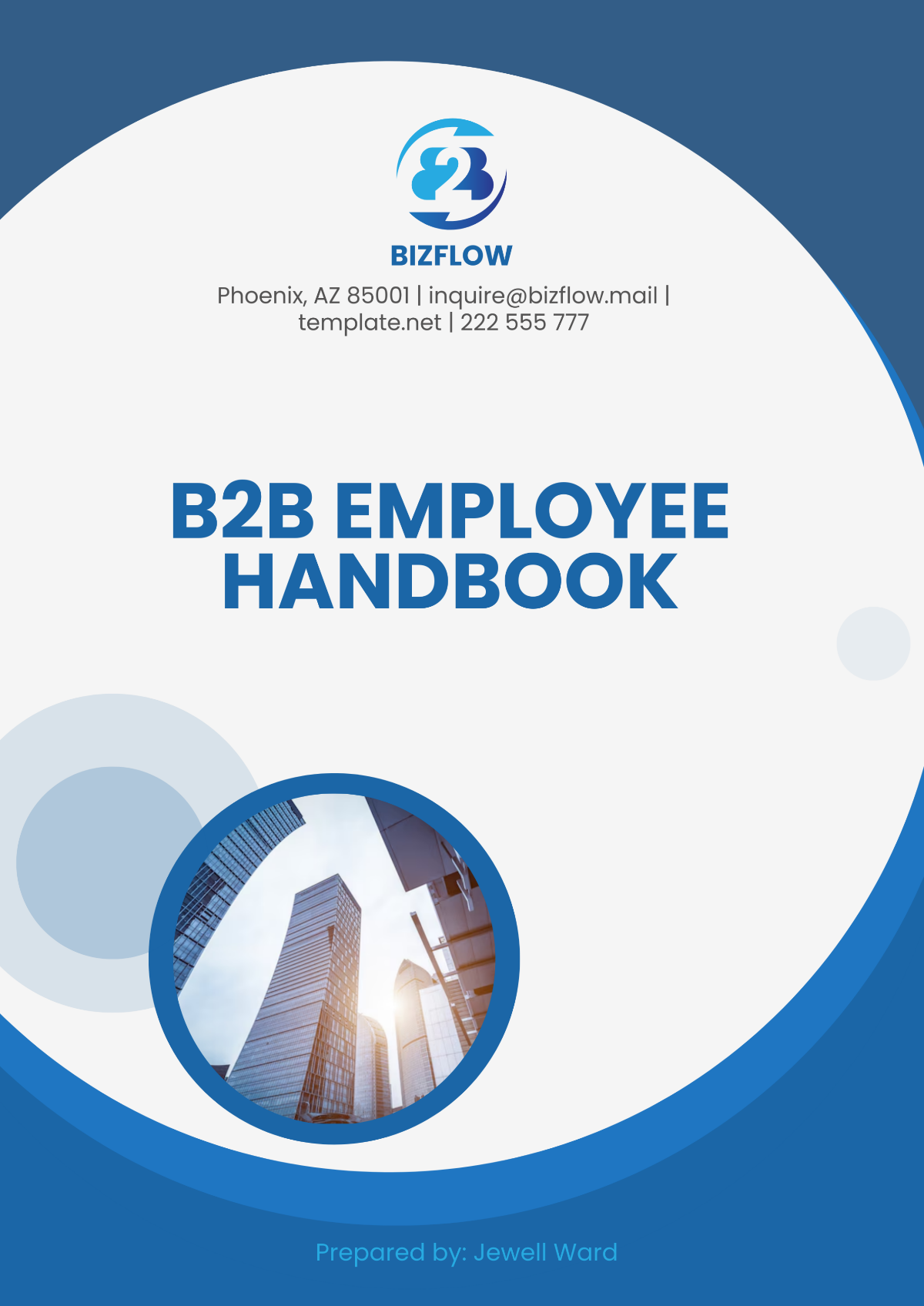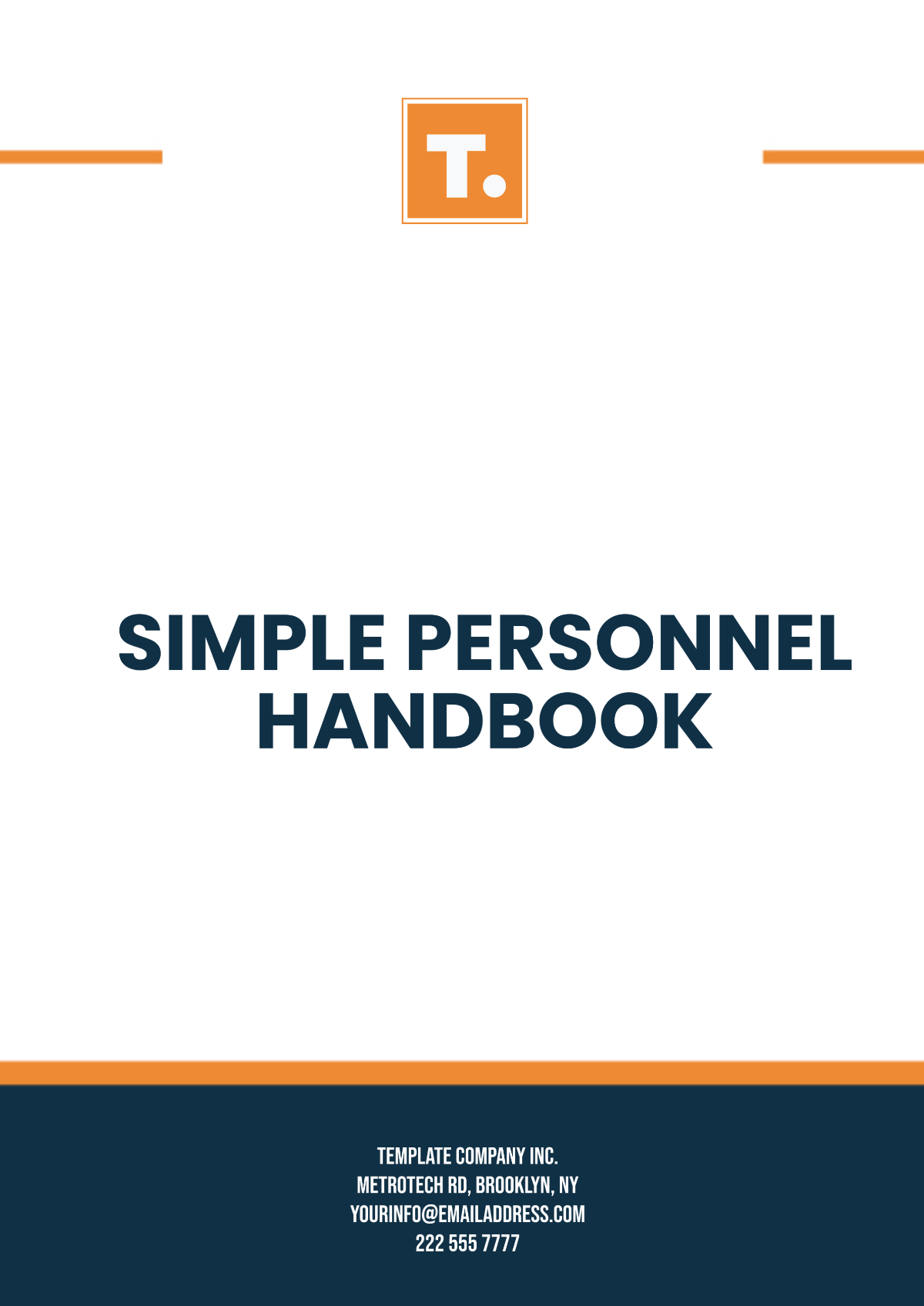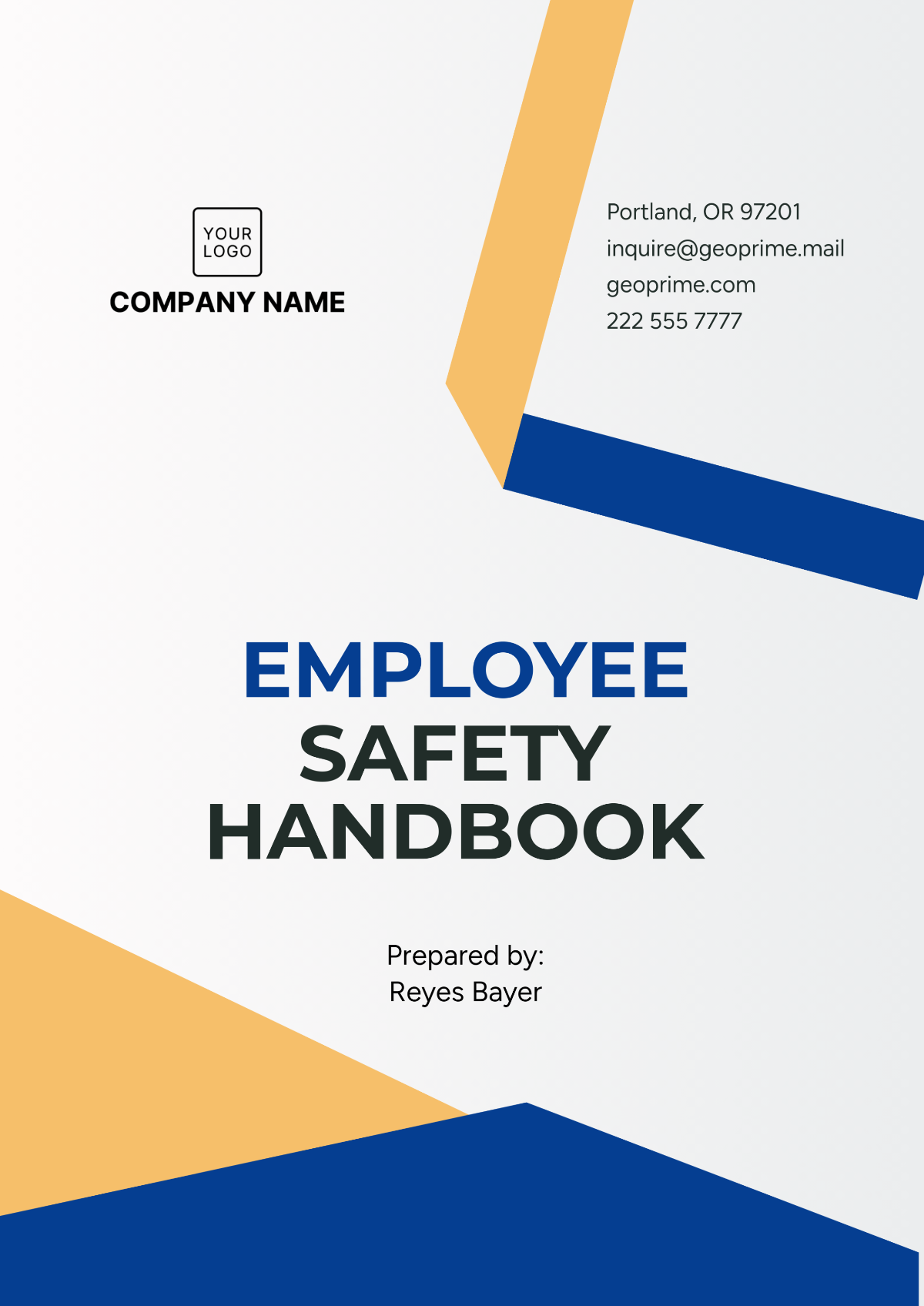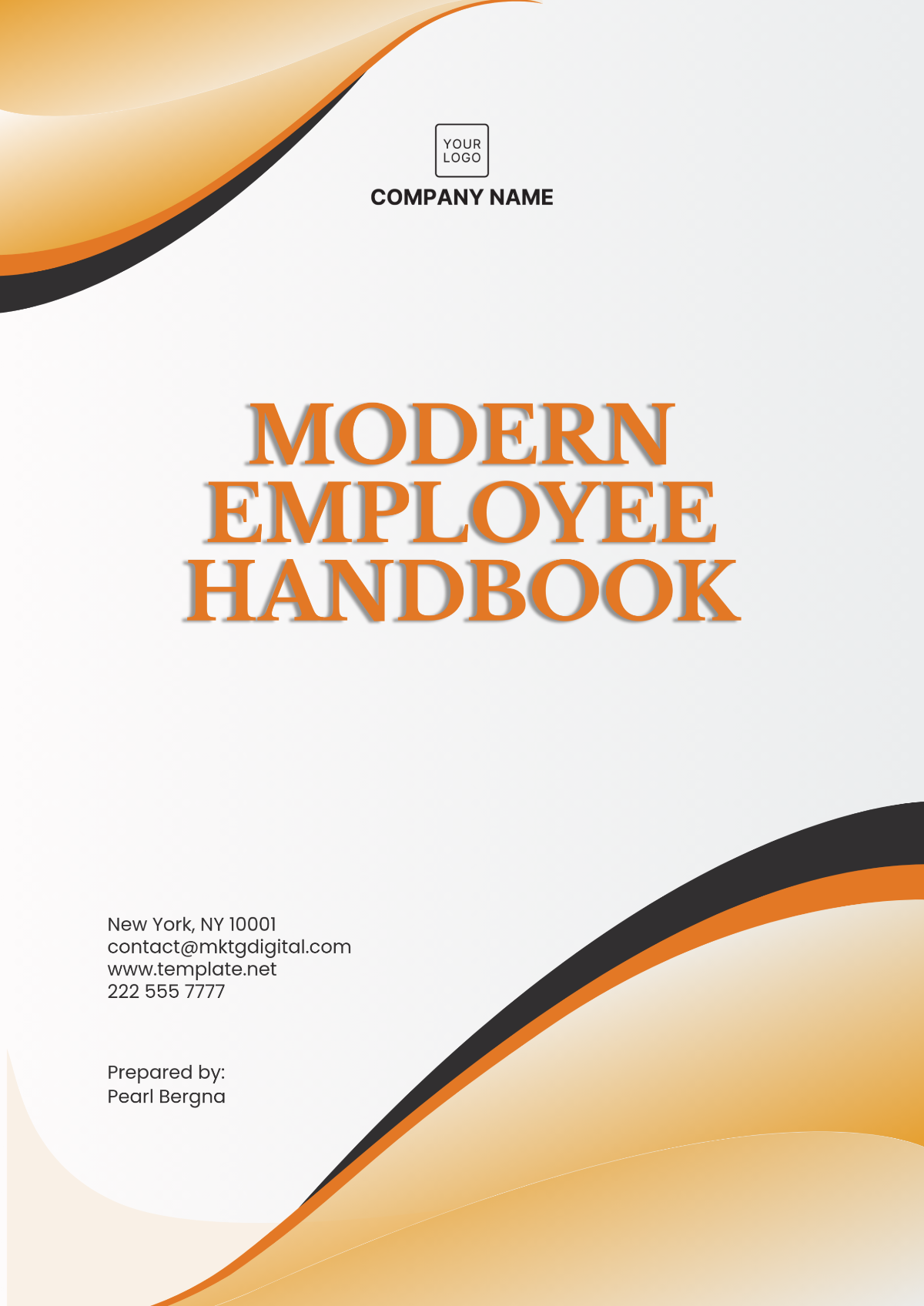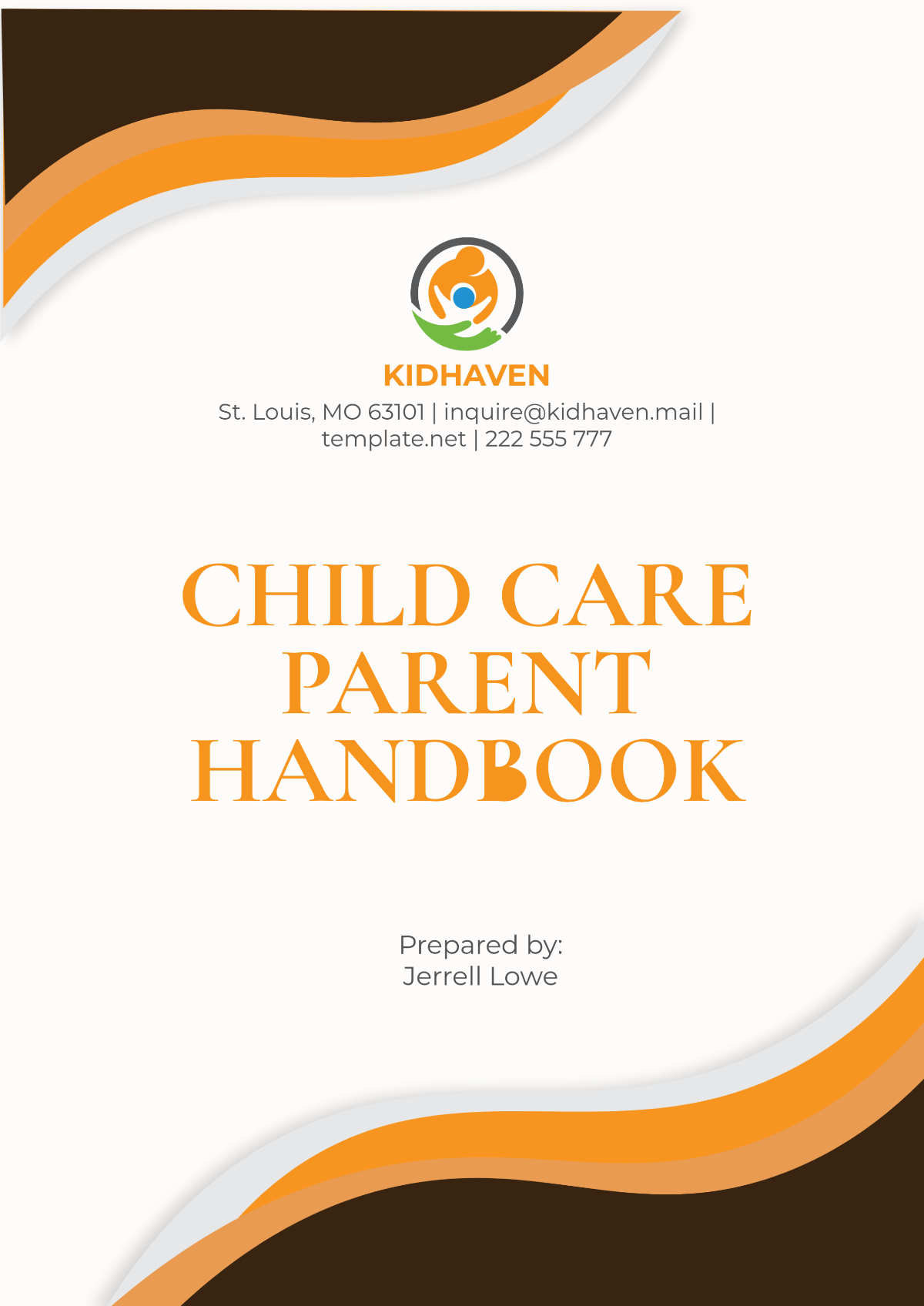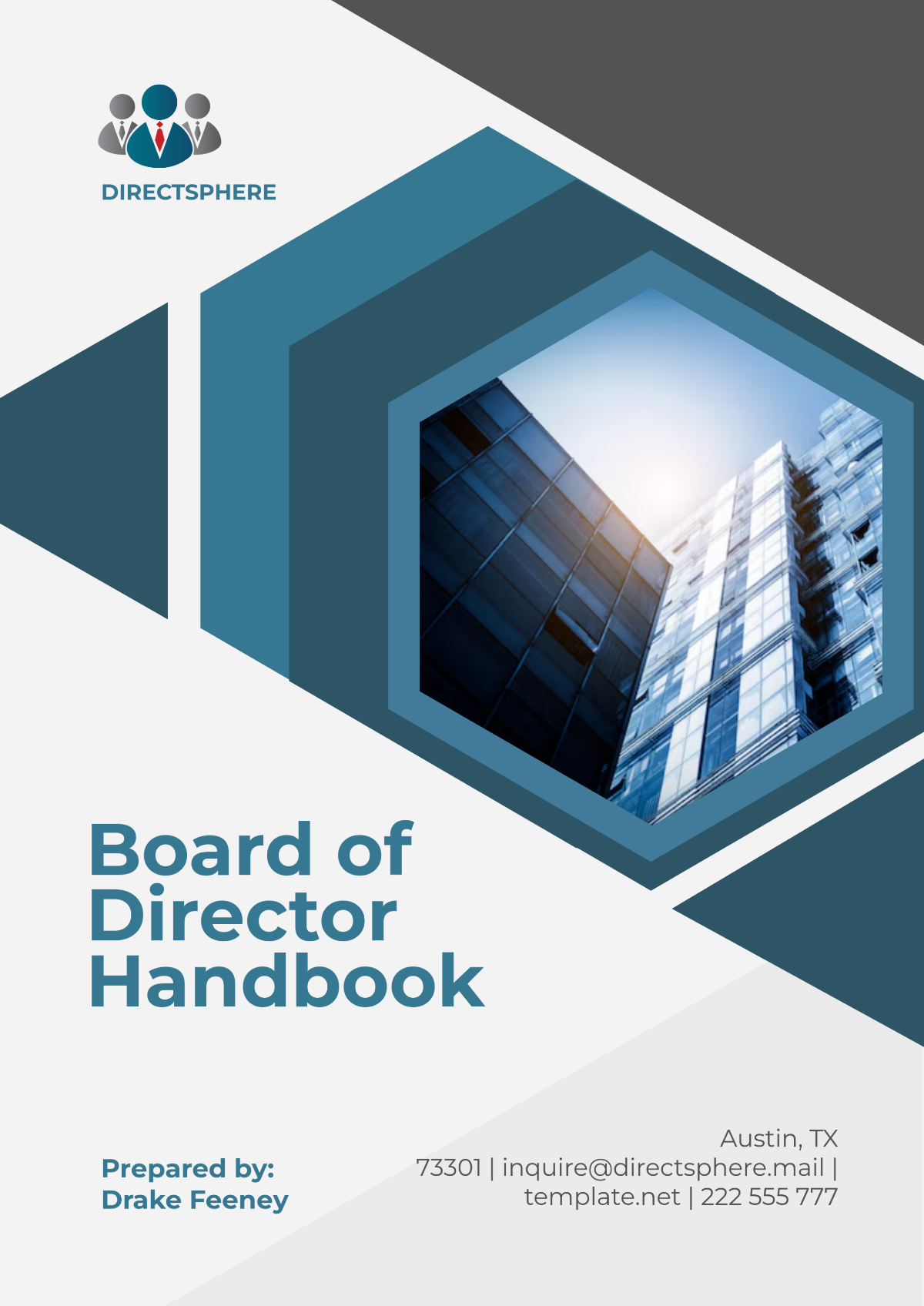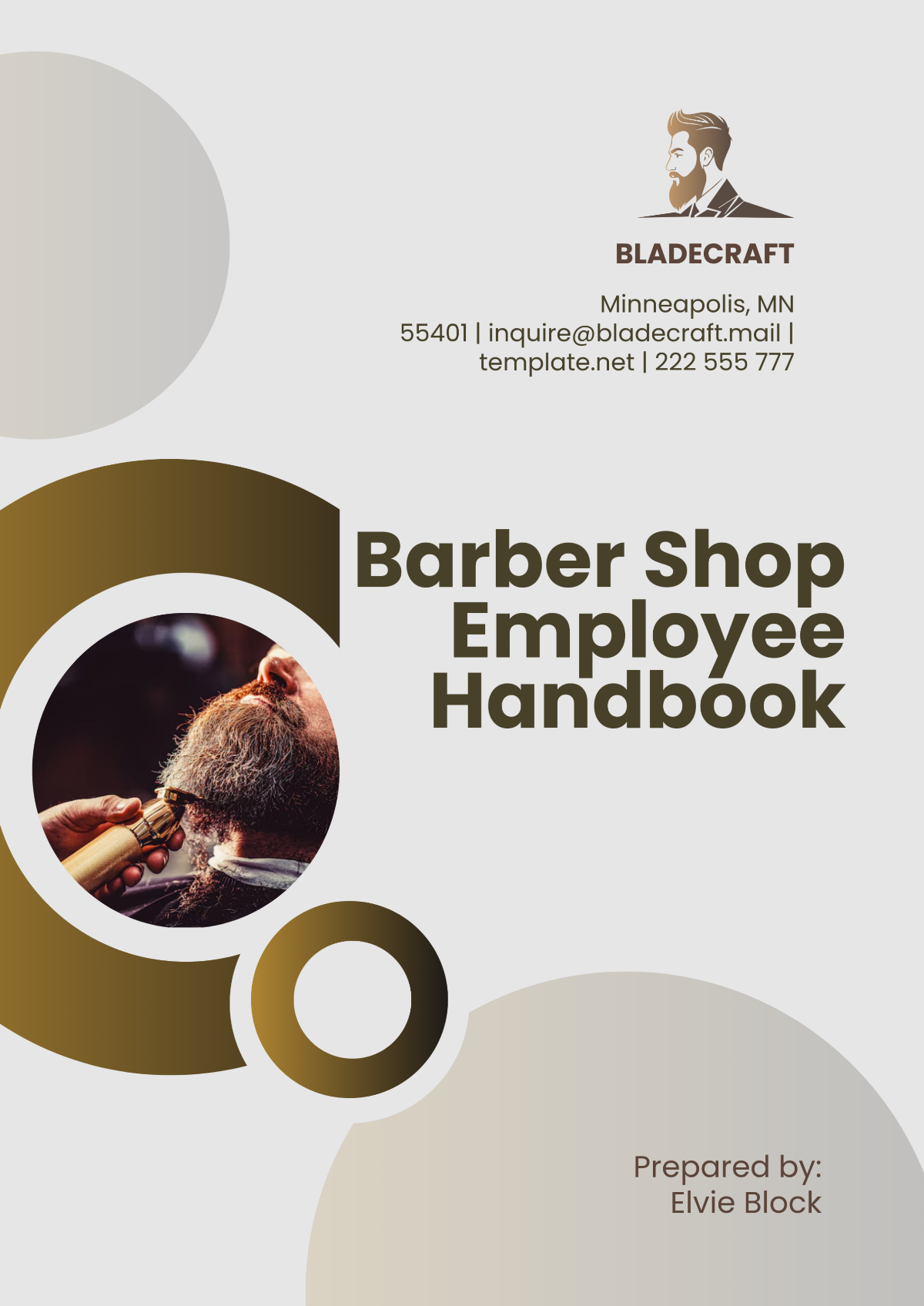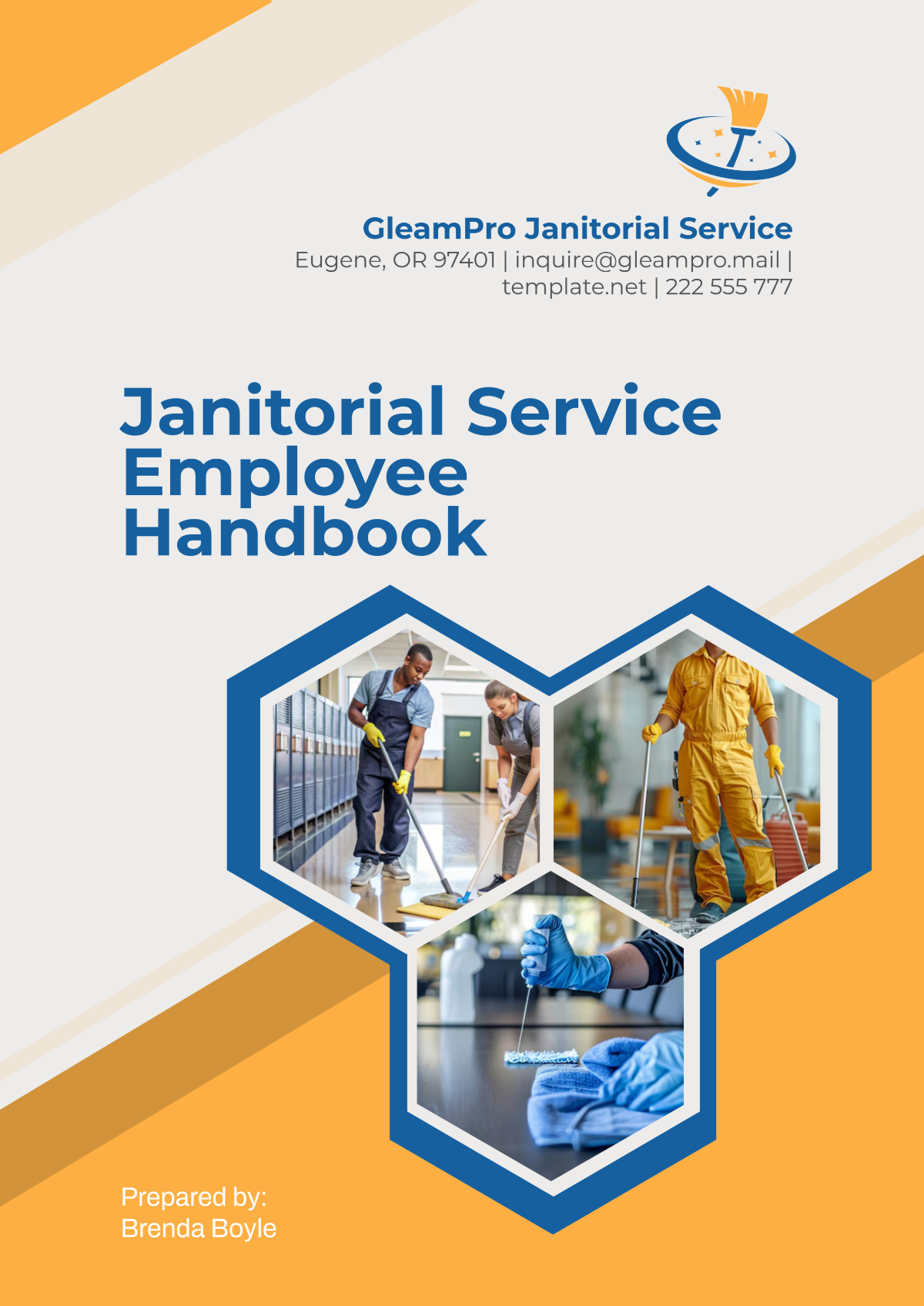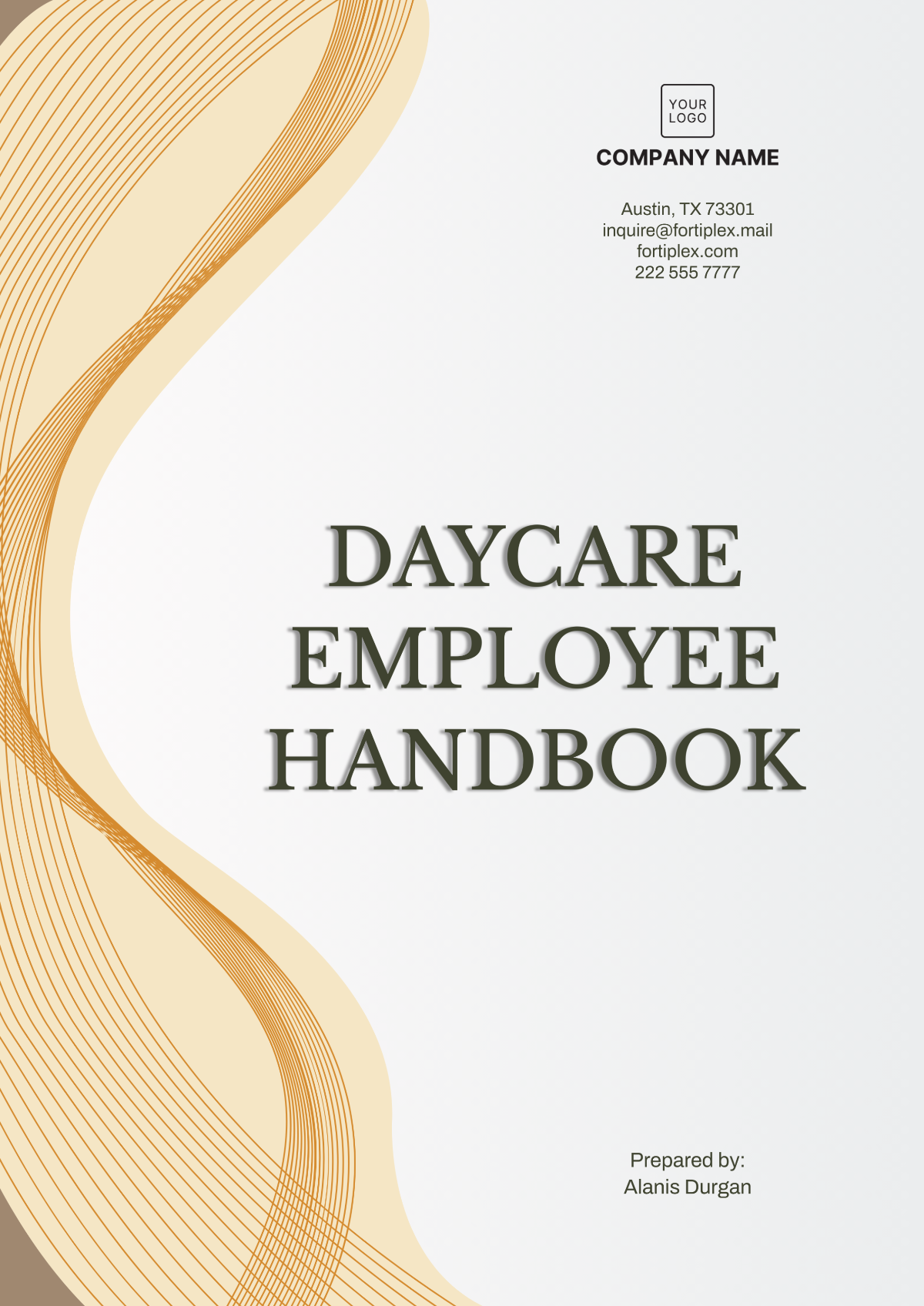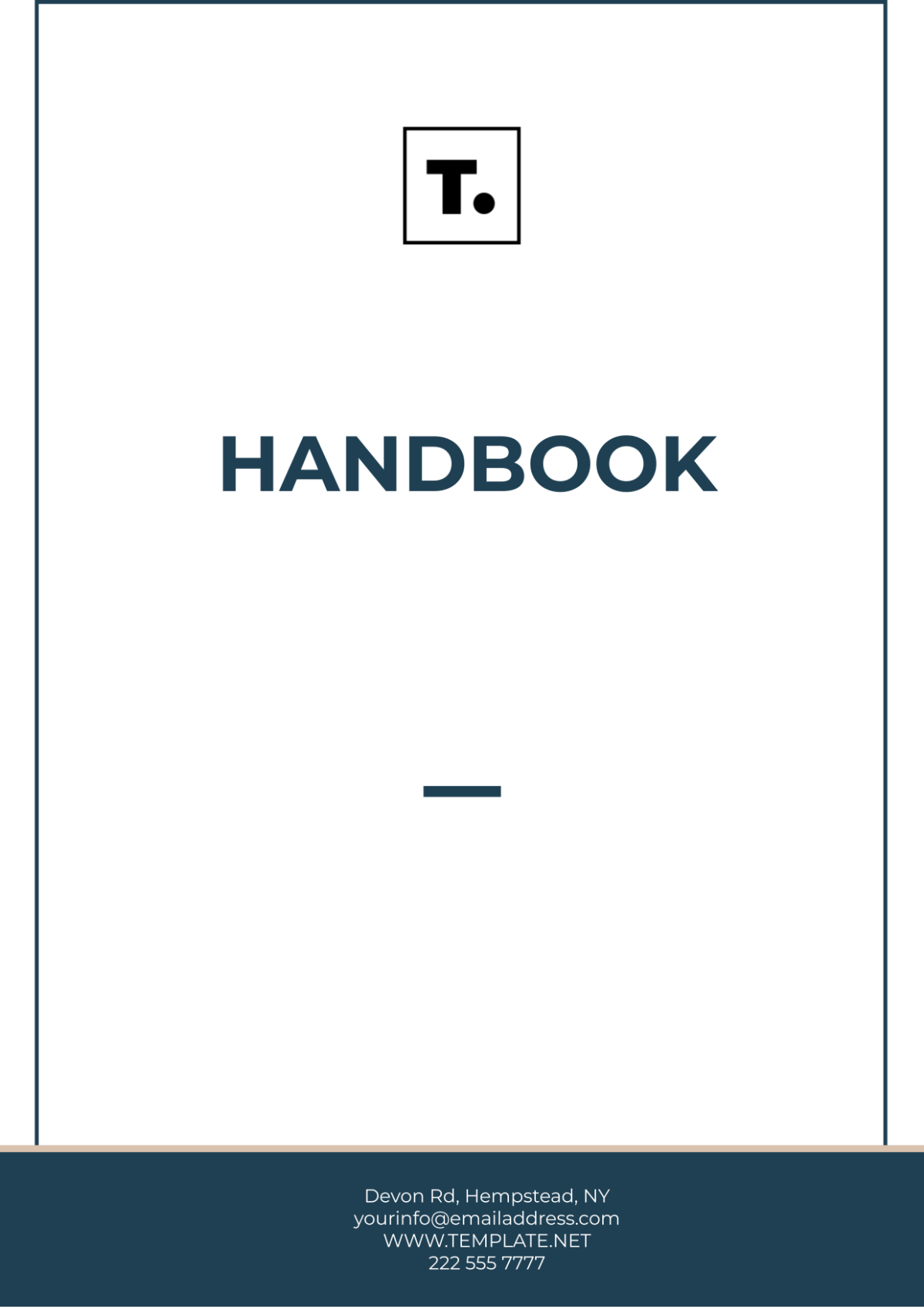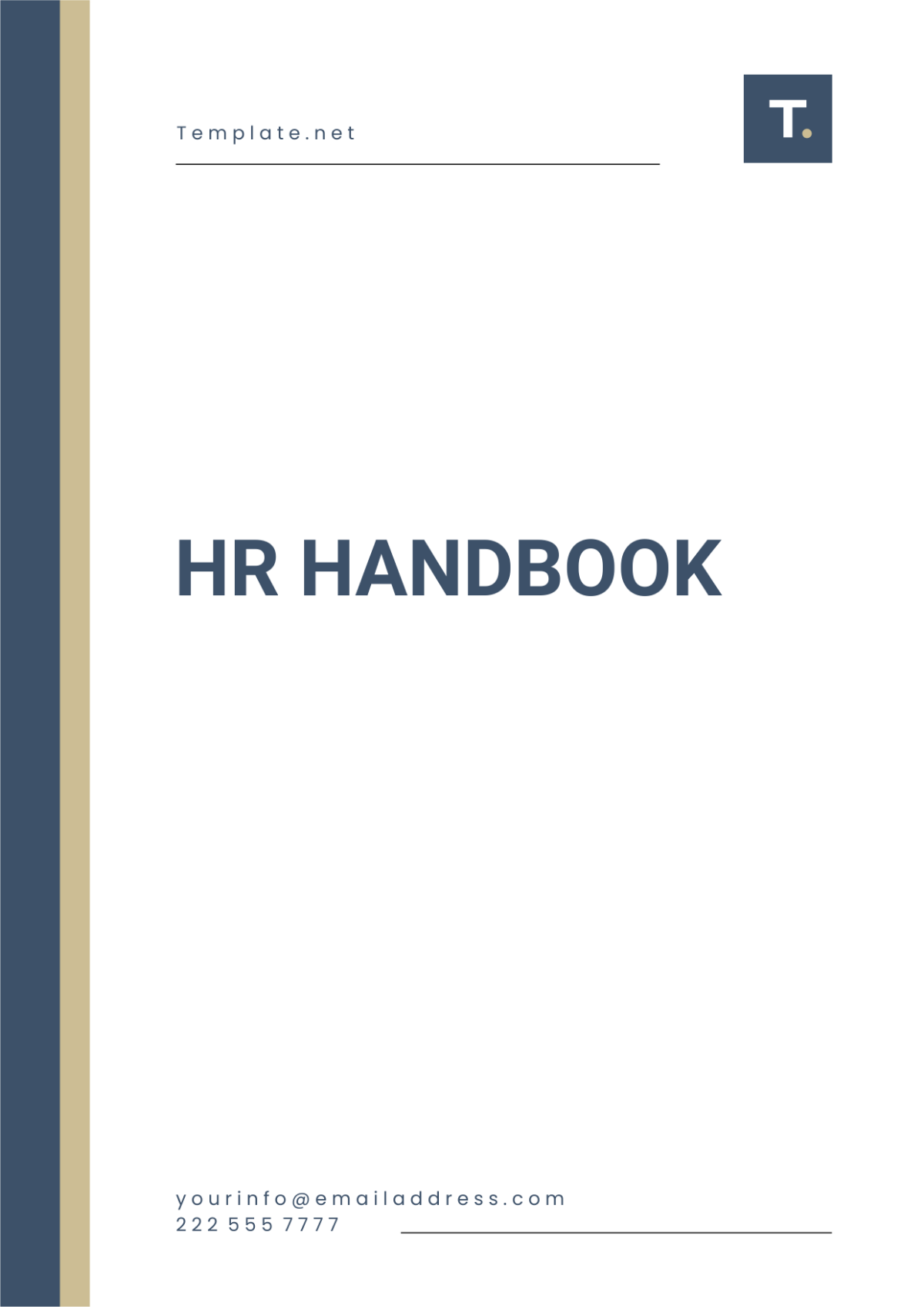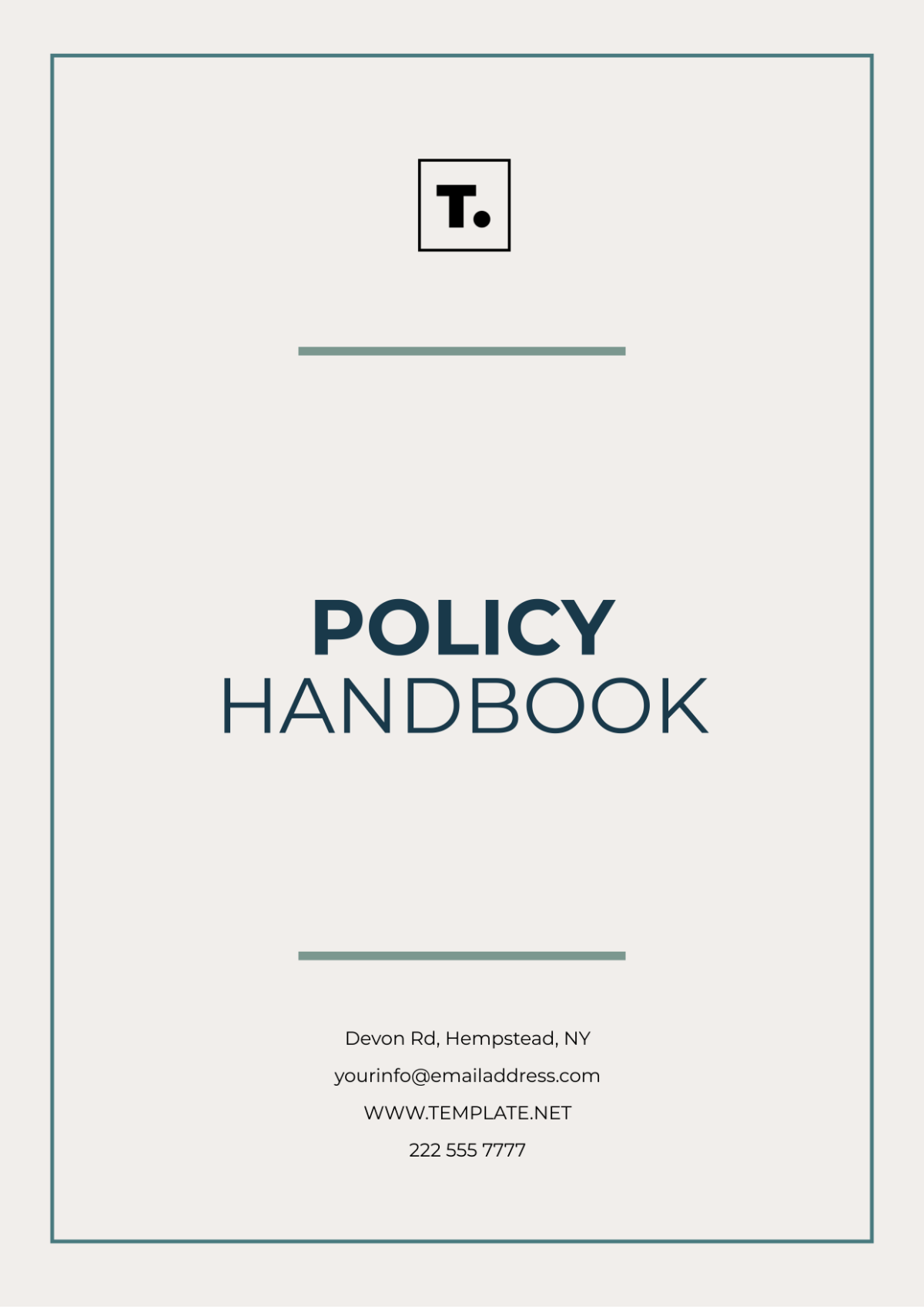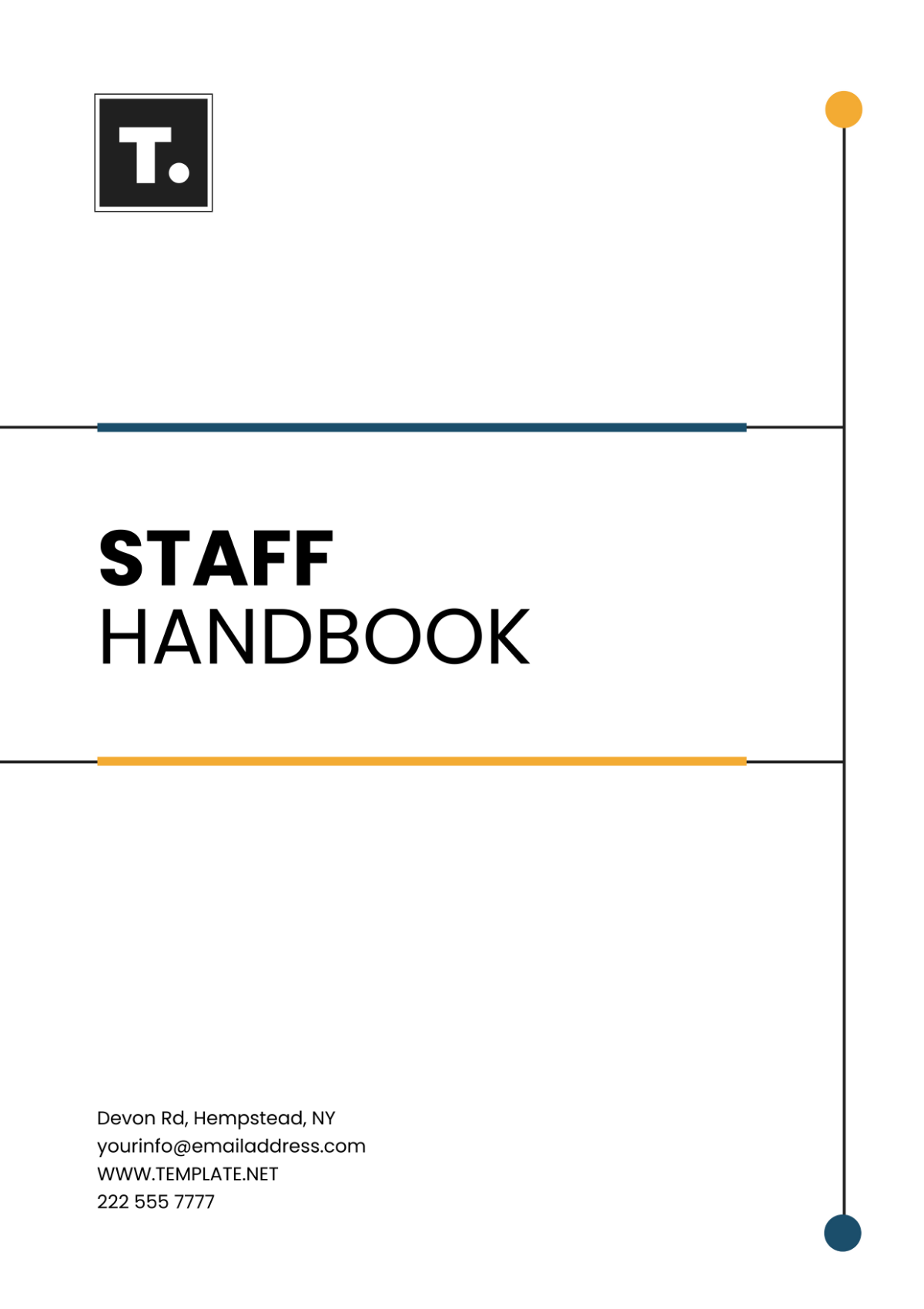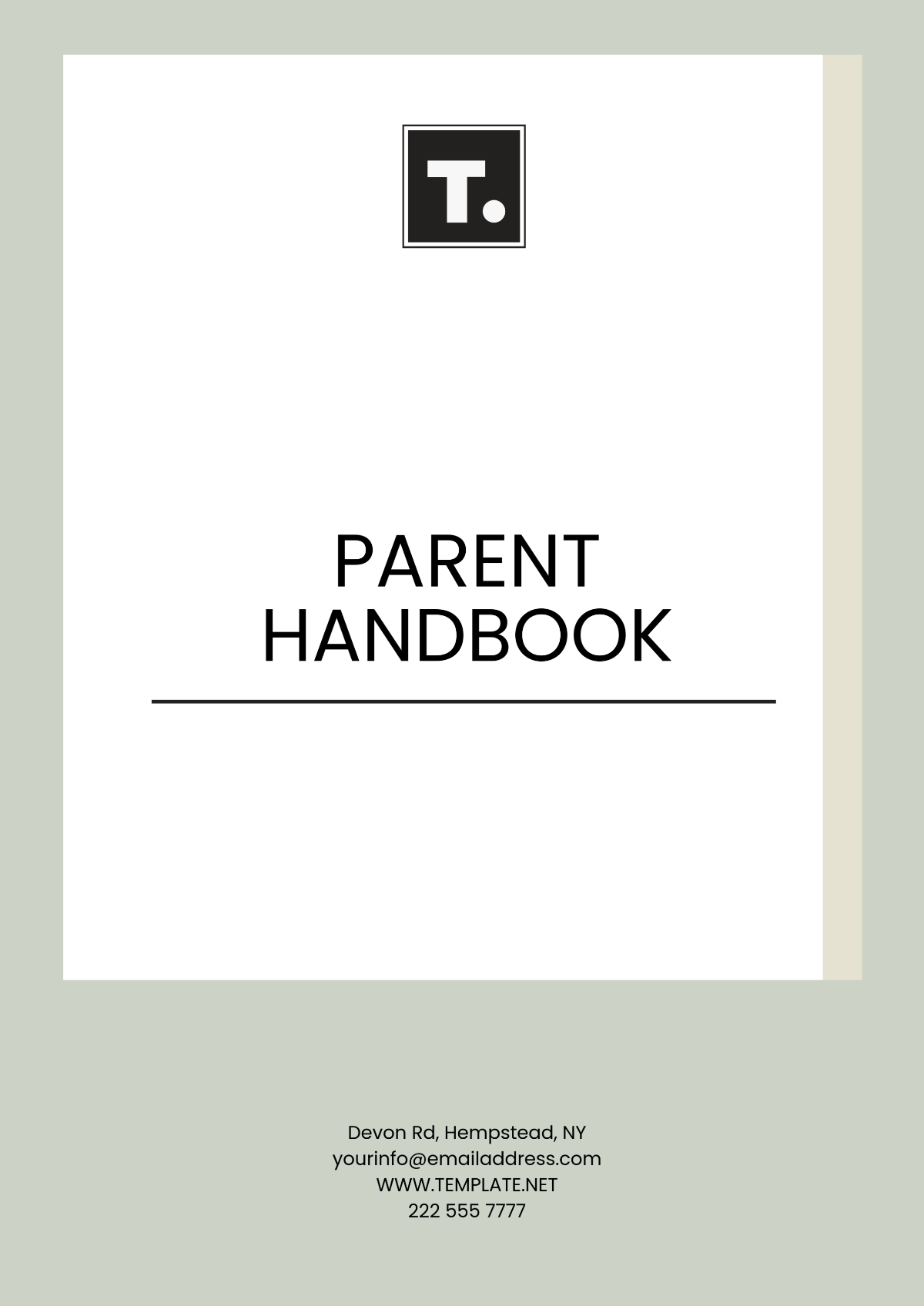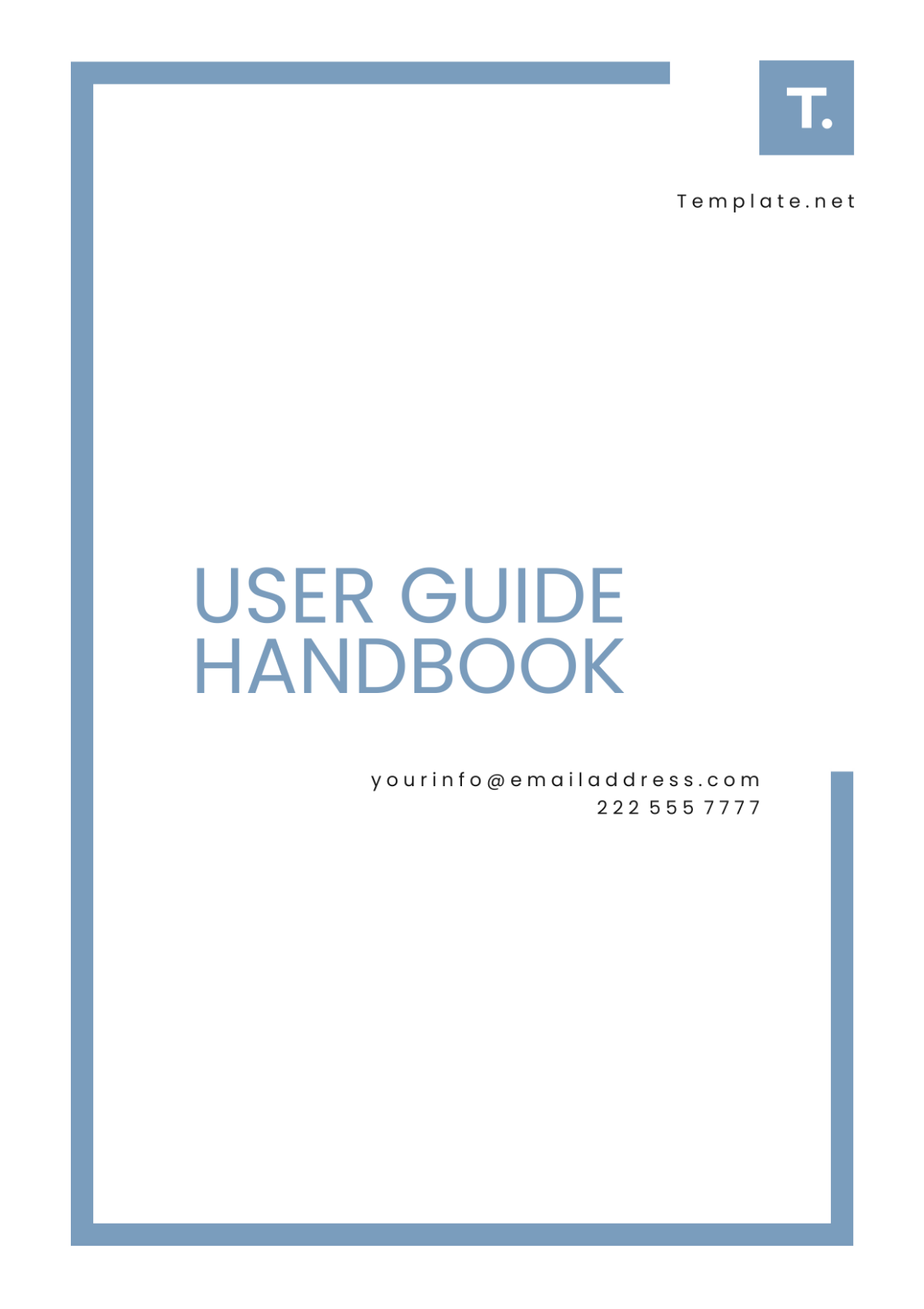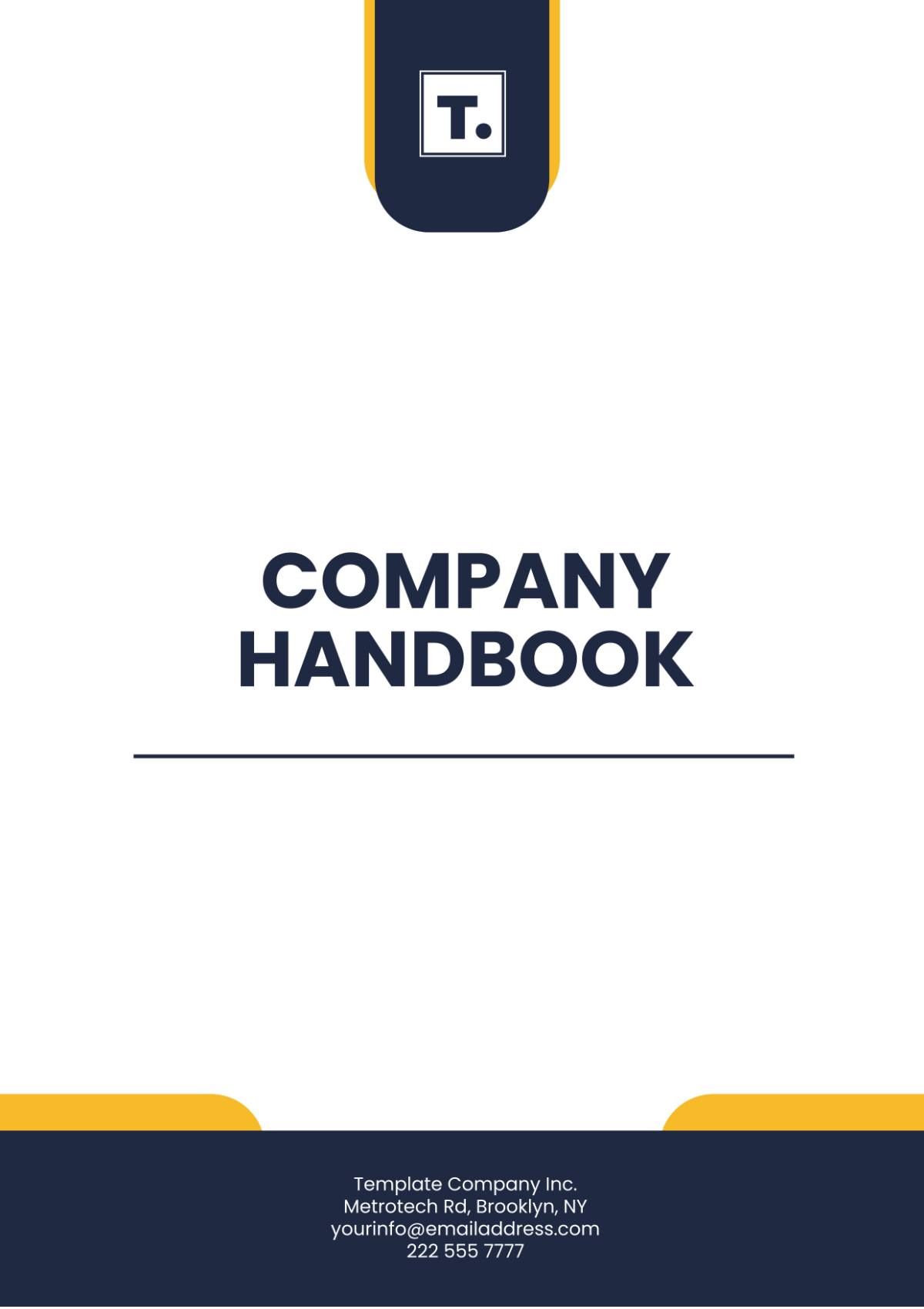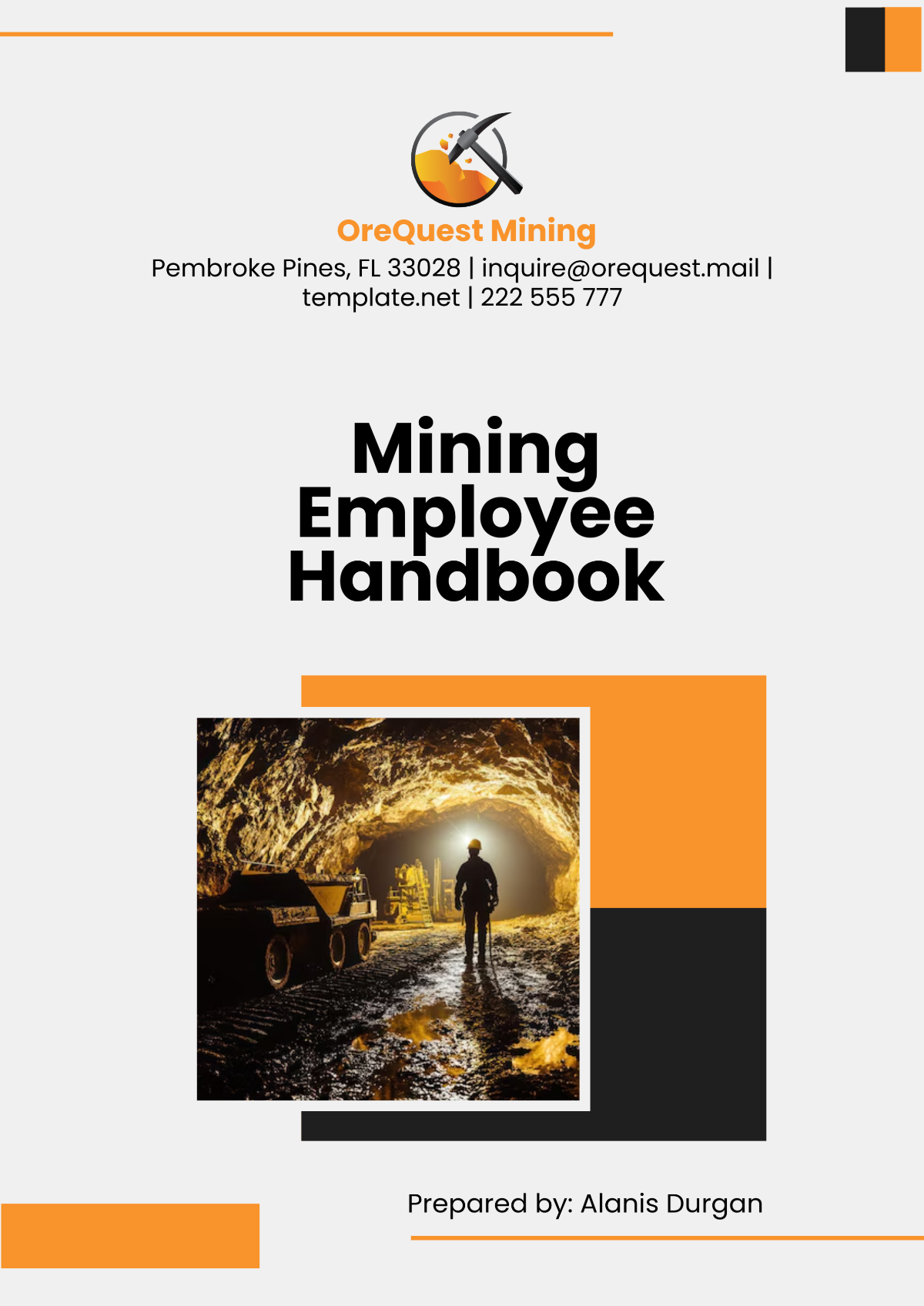Free Interior Design Management Handbook
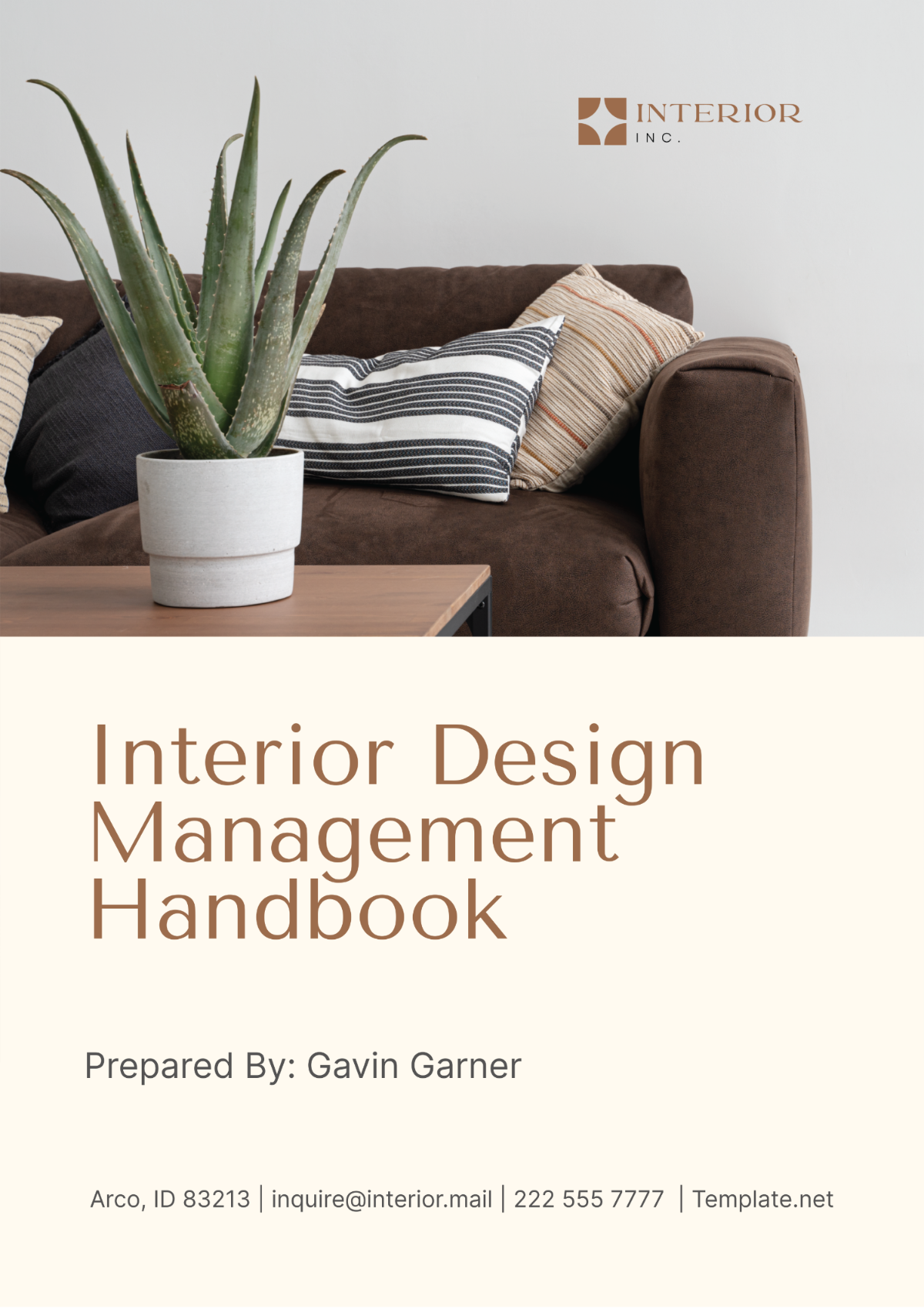
- 100% Customizable, free editor
- Access 1 Million+ Templates, photo’s & graphics
- Download or share as a template
- Click and replace photos, graphics, text, backgrounds
- Resize, crop, AI write & more
- Access advanced editor
Optimize your management practices with Template.net's Interior Design Management Handbook Template. This customizable and editable document offers comprehensive guidance for effective leadership in the interior design industry. Crafted meticulously, it's editable in our AI Editor tool, ensuring seamless customization. Elevate your management skills and drive success in your interior design projects with Template.net.
You may also like
I. Introduction
Interior design is not just about creating aesthetically pleasing spaces; it's about functional, efficient management of the design process to meet client needs and exceed expectations. In this handbook, we outline the key principles and procedures that underpin our approach to interior design management. Our goal is to provide a reference that empowers our teams to deliver consistent, high-quality design projects from conception through completion. The role of an Interior Design Manager in our organization is crucial and multifaceted, involving:
Coordination of project teams and resources.
Oversight of project timelines and deliverables.
Communication with clients to ensure their vision is fully realized.
Budget management and cost control.
Quality assurance of the design and implementation phases.
II. Business Fundamentals for Interior Design
A. Business Plan Creation
The foundation of any successful interior design business begins with a robust business plan. For us, this document serves not only as a roadmap for business operations but also as a tool to attract investors and secure financing. Our business plan outlines our business objectives, services offered, market analysis, marketing strategies, organizational structure, and financial projections. It's designed to guide our strategic decisions and ensure that every aspect of our business aligns with our overall goals.
B. Registration and Licensing Requirements
Operating a legitimate interior design business requires compliance with a range of registration and licensing requirements. We adhere strictly to these regulations to ensure our business operates within the legal frameworks established by local, state, and federal governments. In the United States, these requirements include:
Obtaining a business license from the local municipality.
Registering for state taxes and obtaining a sales tax permit.
Adhering to any specific state licensing requirements for interior designers, which vary by state and may require passing the National Council for Interior Design Qualification (NCIDQ) exam.
Ensuring compliance with federal requirements, such as EIN registration for tax purposes.
C. Financial Planning and Budgeting
Effective financial planning and budgeting are essential to maintain the health and growth of our interior design business. We focus on creating detailed financial plans that forecast our revenues and expenses, allowing us to set realistic budgets for projects and operational costs. This financial foresight helps us manage cash flow, invest in new resources wisely, and ensure profitability. Our budgeting process is designed to be flexible yet rigorous, ensuring that we can adapt to unforeseen changes while keeping our financial targets on track.
D. Contracts and Agreements
In our practice, contracts and agreements form the backbone of reliable business transactions. They safeguard our interests as well as those of our clients and suppliers. Every contract drafted and signed is a meticulous process aimed at clarity and mutual benefit. Key considerations in our contracts include:
Scope of services
Payment terms
Intellectual property rights
Termination clauses
Dispute resolution
E. Industry Regulations and Compliance
Compliance with industry regulations is not only about adhering to the law; it's about upholding the integrity and quality of our profession. We ensure that all aspects of our operations comply with relevant industry standards and regulations. Considerations for staying compliant include:
Adhering to building codes and safety standards.
Following ethical guidelines set forth by professional bodies like the American Society of Interior Designers (ASID).
Ensuring all design practices meet the Americans with Disabilities Act (ADA) standards where applicable.
Staying updated with changes in local, state, and federal regulations affecting the industry.
F. Developing a Unique Selling Proposition
Our unique selling proposition (USP) centers around delivering tailor-made interior design solutions that embody innovation, functionality, and aesthetic excellence. To develop and refine our USP, we focus on:
Understanding and anticipating the needs and preferences of our target market.
Showcasing our commitment to sustainable and environmentally friendly design practices.
Leveraging our team's expertise in a diverse range of design styles and technologies.
Ensuring unparalleled customer service and client satisfaction.
G. Marketing Strategies and Social Media
Our marketing strategies are crafted to build brand awareness and attract a diverse clientele. We utilize a combination of traditional marketing techniques and digital platforms to reach our audience. Our approach includes:
Content marketing through blogs, newsletters, and e-books.
Social media campaigns on platforms like Instagram, Pinterest, and Facebook to showcase our projects and design ideas.
Search engine optimization (SEO) to increase our visibility online.
Paid advertising and retargeting to capture potential clients at various stages of the decision-making process.
H. Public Relations and Networking
Effective public relations and networking are vital to growing our business and establishing our brand in the competitive landscape. We engage in:
Participating in and sponsoring community and industry events to increase our visibility.
Building relationships with influencers and thought leaders in the interior design community.
Collaborating with architects, contractors, and developers to expand our network and business opportunities.
Engaging in speaking opportunities at conferences and panels to establish our expertise.
III. Project Management in Interior Design
A. Project Lifecycle Phases
Effective project management is critical to the success of our interior design projects. We manage each project through distinct lifecycle phases, ensuring systematic progress from start to finish. These phases include:
Conceptualization: Identifying client needs and expectations, and developing the initial design concepts.
Design Development: Refining design details, selecting materials, and preparing detailed drawings and specifications.
Execution: Overseeing the implementation of the design on site, coordinating with contractors and suppliers.
Closure: Finalizing the project, conducting a post-implementation review, and handing over the completed space to the client.
B. Client Management and Communication
Strong client management and communication are the cornerstones of our project management approach. We maintain open lines of communication through regular meetings, updates, and reports, ensuring that clients are always informed and involved in the decision-making process. Our project managers are trained to listen actively to client feedback and adapt the project scope and details to better meet client expectations while maintaining design integrity and project feasibility.
C. Budget Management
Budget management is essential to deliver projects within the financial expectations of our clients. We begin with a detailed cost estimation that informs the budget allocation across different stages and elements of the project. Regular financial reviews and updates allow us to monitor expenditures and make adjustments as necessary to avoid overruns and ensure financial compliance with the client’s expectations.
D. Timeline Development and Scheduling
Developing a realistic timeline and effective scheduling are vital to project success. We use project management tools to outline key milestones and deadlines. This schedule is shared with all stakeholders, ensuring everyone is synchronized and aware of their responsibilities and deadlines. Regular progress checks help identify any deviations from the plan, allowing for timely interventions to keep the project on track.
E. Risk Assessment and Mitigation Strategies
Risk management is integral to our project management strategy, ensuring potential issues are identified and addressed proactively. Below is a table outlining typical risks, their likelihood, and their impact:
Risk | Likelihood | Impact |
|---|---|---|
Cost Overruns | Medium | High |
Delayed Material Supply | High | Medium |
Non-compliance with Codes | Low | High |
Client Change Requests | High | Medium |
After identifying these risks, we implement mitigation strategies to minimize their likelihood and impact. For instance, we conduct thorough upfront planning and maintain contingency funds to handle cost overruns. Regular monitoring of supply chains helps prevent delays, and continuous training ensures our team remains compliant with all relevant codes and regulations. For client change requests, we maintain flexible project plans but also ensure clear communication about the scope, time, and cost implications of such changes.
IV. Design Development and Implementation
A. Conceptualization and Schematic Design
The first step in the physical design process is conceptualization and schematic design. This phase involves translating the client's vision and requirements into tangible design concepts. We utilize brainstorming sessions, mood boards, and sketches to explore various design possibilities. Once a concept aligns with the client's expectations and our creative direction, we develop schematic designs. These preliminary layouts and elevations provide a clear visual representation of the spatial arrangement and functional planning of the interior spaces.
B. Design Documentation and Detailing
Following the approval of schematic designs, we move into detailed design documentation. This stage is critical for the accurate execution of the design intent. Our team prepares detailed drawings and specifications that cover all aspects of the interior spaces, including electrical layouts, plumbing, joinery details, and elevations. These documents serve as a comprehensive guide for contractors and ensure that the design vision is executed precisely.
C. Selection of Materials and Finishes
Selecting the right materials and finishes is essential for achieving the desired aesthetic and functional quality of the interior spaces. Our selection process is guided by several key criteria:
Aesthetics: How well the materials reflect the desired style and concept.
Durability: Suitability of materials for their intended use and longevity.
Sustainability: Environmental impact of materials, including recyclability.
Maintenance: Requirements for upkeep and the ease of cleaning.
Cost: Alignment with the project's budget constraints.
D. Coordination with Contractors and Suppliers
Effective coordination with contractors and suppliers is crucial for the smooth execution of design projects. We maintain clear communication channels and regular meetings to ensure that all parties are aligned with the project timelines and quality standards. Our project managers oversee the procurement process, coordinate delivery schedules, and manage the on-site implementation to ensure that every aspect of the design is executed according to plan.
E. Quality Control and Assurance
Maintaining high standards of quality is paramount throughout the design and implementation phases. We implement rigorous quality control (QC) guidelines to ensure that every element of the project meets our standards:
Regular on-site inspections to monitor the adherence to design specifications.
Review and approval of materials and products before installation.
Continuous coordination meetings to address and resolve any discrepancies immediately.
Performance testing of installations (e.g., lighting, HVAC) to ensure operational efficiency.
Final walk-through with a detailed checklist before project handover to the client.
V. Resource Management
A. Building and Leading a Design Team
The success of our projects largely depends on the talent and cohesion of our design team. To build and lead an effective team, we focus on recruiting skilled professionals who share our passion for excellence in interior design. We emphasize diversity in skills and perspectives to foster creativity and innovation. Leadership in our team is about setting clear goals, providing ongoing training, and encouraging a collaborative environment where ideas can be freely exchanged. Regular team meetings and performance reviews help ensure that everyone is aligned with our company’s objectives and is continuously developing their skills.
B. Vendor and Supplier Relationships
Maintaining strong relationships with vendors and suppliers is crucial for the timely and cost-effective execution of our projects. We strive to build partnerships based on trust, reliability, and mutual benefit. Our approach involves careful selection of vendors who share our commitment to quality and sustainability. We maintain regular communication, negotiate fair terms, and ensure transparent dealings to create a dependable supply chain. These relationships not only help in achieving better pricing and terms but also ensure priority service and support, which can be critical during tight project timelines.
C. Inventory Management and Procurement
Effective inventory management and procurement strategies are essential to avoid delays and ensure that projects are completed within budget and on schedule. We utilize a systematic approach to inventory management, which includes timely procurement of materials, tracking of stock levels, and regular audits to prevent overstocking and underutilization. Our procurement process is streamlined to ensure quick decision-making, leveraging technology for efficient order processing and tracking. This system allows us to maintain a balance between availability and cost efficiency, ensuring that resources are available when needed without tying up excessive capital.
D. Managing Design Libraries
Our design libraries are crucial resources that support the creativity and efficiency of our design process. Managing these libraries involves regularly updating and organizing a vast array of materials, samples, catalogues, and digital resources. We ensure that our libraries are well-maintained and easily accessible to all team members, facilitating quick retrieval of necessary information and materials. This management extends to digital assets, where we use digital cataloguing systems to manage electronic resources like images, templates, and design software. Keeping these resources current and organized is key to maintaining our competitive edge and operational efficiency.
VI. Technology in Interior Design
A. Design Software and Tools
In our commitment to staying at the forefront of interior design, we leverage advanced design software and tools that enhance our capabilities in creating detailed and precise designs. These tools allow our designers to visualize spaces more effectively, make adjustments in real time, and ensure accuracy in dimensions and layouts. Common tools used in our design processes include:
AutoCAD: For creating precise 2D and 3D drawings.
SketchUp: For 3D modeling and visualizing architectural designs.
Revit: Integrates BIM capabilities to manage infrastructure projects.
Adobe Photoshop: For high-quality image editing and creating renders.
3ds Max: Used for creating detailed 3D models and animations.
B. BIM (Building Information Modeling) for Interior Design
Building Information Modeling (BIM) technology is pivotal in our design process, particularly for complex projects. BIM helps us create and manage digital representations of physical and functional characteristics of spaces. It facilitates better decision-making throughout the design and construction phases, improves coordination among stakeholders, and enhances the accuracy of design and construction documents. By integrating BIM, we can optimize the design for operational performance, predict and resolve potential conflicts in designs, and streamline the workflow.
C. Virtual and Augmented Reality for Client Presentations
We employ Virtual Reality (VR) and Augmented Reality (AR) technologies to elevate our client presentations, providing immersive experiences that allow clients to visualize their spaces before actual construction begins. VR gives a complete, immersive walkthrough of the planned space, aiding in spatial understanding and aesthetic feel. AR overlays digital elements onto a real-world view, helping clients visualize changes in an existing space. These technologies make our presentations more interactive and allow for real-time feedback and alterations, enhancing client satisfaction and engagement.
D. Data Management and Security
As a tech-forward design firm, managing and securing the vast amounts of data we generate and collect is a top priority. Effective data management ensures that all project information, from client details to design files, is organized and accessible to team members who need it, while maintaining confidentiality and integrity. We implement robust data security measures, including secure storage solutions, regular backups, and strict access controls. These practices protect against data breaches and loss, ensuring that our business operations and our clients' information are secure.
VII. Financial Management
A. Cost Estimation and Quoting
Accurate cost estimation and effective quoting are critical to maintaining the financial health of our projects. We utilize a detailed process that incorporates historical data, current material costs, and labor rates to forecast the total expenses accurately. This comprehensive approach allows us to create transparent and competitive quotes for our clients, ensuring there are no surprises. Our estimations also account for potential variables and contingencies, safeguarding against unforeseen costs.
B. Project Billing and Payment Schedules
Project billing and payment schedules are tailored to each project's timeline and complexity, ensuring a steady cash flow and aligning with client expectations. Common payment schedules include:
Deposit upon project commencement
Progress payments:
Final payment
These schedules are clearly communicated and agreed upon at the start of each project to avoid any misunderstandings and ensure smooth financial operations.
C. Financial Analysis and Reporting
Our approach to financial analysis and reporting involves regular monitoring and evaluation of financial data to guide our decision-making process. This includes tracking key performance indicators (KPIs), budget vs. actual spending, and overall financial health. We use specialized software to automate much of this process, providing timely and accurate reports that help us adjust our strategies as necessary to optimize financial performance.
VIII. Sustainability and Trends
A. Sustainable Design Practices
Sustainability is at the core of our design philosophy. We incorporate sustainable practices throughout our projects to minimize environmental impact and promote healthy living environments. Key practices include:
Using eco-friendly materials
Energy-efficient design
Water conservation
Waste reduction
B. Current and Emerging Trends in Interior Design
Staying abreast of design trends is crucial for maintaining relevancy and innovation in our projects. Some of the current and emerging trends include:
Biophilic design
Smart home technology
Minimalist aesthetics
Multifunctional spaces
C. Adapting to Changing Consumer Preferences
Adapting to changing consumer preferences is essential for staying competitive and meeting client expectations. We regularly conduct market research and solicit client feedback to understand evolving tastes and needs. This insight allows us to adjust our design approaches, services, and marketing strategies to align with current demands, ensuring that we continue to offer relevant and desirable solutions to our clients.


